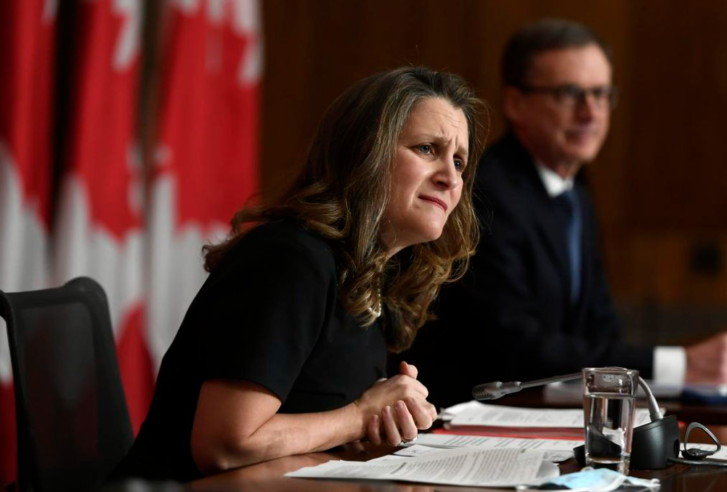The Liberal government’s economic update swung between painting a rosy picture of an economy on the rebound and a gloomy portrait of uncertainty ahead.
OTTAWA—The Liberal government’s economic update Tuesday swung between painting a rosy picture of an economy on the rebound and a gloomy portrait of uncertainty ahead thanks to the newest COVID-19 variant whipping around the globe.
Federal Finance Minister Chrystia Freeland found herself personally walking that line as she presented the Liberal government’s fall financial statement virtually, after two of her staffers tested positive on a rapid test, and she decided to cancel in-person public appearances.
“With all the spending here … with all of the exhortations I am making to Canadians to please get your boosters, use your rapid tests, the right thing for me to do was to behave with an abundance of caution,” she told reporters ahead of presenting the update in the House of Commons Friday.
The unknowns of the Omicron variant has the government booking an extra $5 billion in spending for this year specifically to respond to its potential implications, so far believed to be much more contagious than previous ones but perhaps with less severe health outcomes.
That’s on top of other new COVID spending measures outlined Tuesday: $2 billion for treatments, $1.7 billion for rapid tests, $100 million for better ventilation in schools and $70 million more for better ventilation for community buildings.
The economic pressures causes by the pandemic, however, have also helped strengthen the government’s ability to provide some of that extra fiscal support.
Supply-chain issues worldwide driving prices higher, and the rise of oil prices as well, means more money pouring into government coffers via taxes.
Tuesday’s update pegs the deficit this year as $144.5 billion, $10 billion less than the government thought it would be when it tabled its budget in the spring.

“The performance of the economy has been more robust than we forecast,” Freeland said.
Canada has weathered what the “trauma” of the pandemic well, comparatively, Freeland said, pointing to the fact all jobs lost have been recovered, exports are rising, new businesses are popping up and as vaccination rates rose, some measure of normalcy was beginning to return.
“With winter upon us, we know that there will still be some tempests ahead. But we are resilient. Our plan is working,” she said.
The financial update, however, is peppered with caveats.
“The path forward will depend on a number of tailwinds and headwinds, which could either bolster the recovery or push it off course,” the document says.
“Of concern, the global health situation has deteriorated in recent weeks, with resurgences of COVID-19 in some regions and the emergence of a new variant, Omicron.”
The fast recovery projections suggest another $6 billion will get shaved of the deficit, the slow recovery forecasts say about $6 billion will get added, as one example of the wild swings that could be coming.
The update isn’t 100 per cent focused on COVID-19.
It also sets aside $5 billion for the federal government’s share of helping B.C. rebuild after natural disasters earlier this year, earmarks $40 billion over seven years related to Indigenous reconciliation and court settlements, and also money to help resettle Afghan refugees, get the Immigration system moving faster again to address labour shortages and ease carbon tax pricing pressures for farmers and small business.
Article From: The Star
Author: Stephanie Levitz

